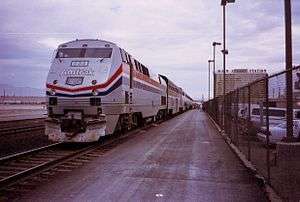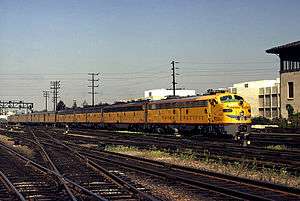Desert Wind
|
Desert Wind in Las Vegas | |||||||||||||||||||||||||||||||||||||||||||||||||||||||||||||||||||||||||||||||||||||||||||||||||||||||||||||||||||||||||||||||||||||||||||||||||||||||||||||||||||||||||||||||||||||||||||||||||||||||||||||||||||||||||||||||||||||||||||||||||||||||||||||||||||||||||||||||||||||||||||||||||||||||||||||||||
| Overview | |||||||||||||||||||||||||||||||||||||||||||||||||||||||||||||||||||||||||||||||||||||||||||||||||||||||||||||||||||||||||||||||||||||||||||||||||||||||||||||||||||||||||||||||||||||||||||||||||||||||||||||||||||||||||||||||||||||||||||||||||||||||||||||||||||||||||||||||||||||||||||||||||||||||||||||||||
|---|---|---|---|---|---|---|---|---|---|---|---|---|---|---|---|---|---|---|---|---|---|---|---|---|---|---|---|---|---|---|---|---|---|---|---|---|---|---|---|---|---|---|---|---|---|---|---|---|---|---|---|---|---|---|---|---|---|---|---|---|---|---|---|---|---|---|---|---|---|---|---|---|---|---|---|---|---|---|---|---|---|---|---|---|---|---|---|---|---|---|---|---|---|---|---|---|---|---|---|---|---|---|---|---|---|---|---|---|---|---|---|---|---|---|---|---|---|---|---|---|---|---|---|---|---|---|---|---|---|---|---|---|---|---|---|---|---|---|---|---|---|---|---|---|---|---|---|---|---|---|---|---|---|---|---|---|---|---|---|---|---|---|---|---|---|---|---|---|---|---|---|---|---|---|---|---|---|---|---|---|---|---|---|---|---|---|---|---|---|---|---|---|---|---|---|---|---|---|---|---|---|---|---|---|---|---|---|---|---|---|---|---|---|---|---|---|---|---|---|---|---|---|---|---|---|---|---|---|---|---|---|---|---|---|---|---|---|---|---|---|---|---|---|---|---|---|---|---|---|---|---|---|---|---|---|---|---|---|---|---|---|---|---|---|---|---|---|---|---|---|---|---|---|---|---|---|---|---|---|---|---|---|---|---|---|---|---|---|---|---|---|---|---|---|---|---|---|---|---|---|---|---|---|---|---|
| Service type | Inter-city rail | ||||||||||||||||||||||||||||||||||||||||||||||||||||||||||||||||||||||||||||||||||||||||||||||||||||||||||||||||||||||||||||||||||||||||||||||||||||||||||||||||||||||||||||||||||||||||||||||||||||||||||||||||||||||||||||||||||||||||||||||||||||||||||||||||||||||||||||||||||||||||||||||||||||||||||||||||
| Status | Discontinued | ||||||||||||||||||||||||||||||||||||||||||||||||||||||||||||||||||||||||||||||||||||||||||||||||||||||||||||||||||||||||||||||||||||||||||||||||||||||||||||||||||||||||||||||||||||||||||||||||||||||||||||||||||||||||||||||||||||||||||||||||||||||||||||||||||||||||||||||||||||||||||||||||||||||||||||||||
| Locale | Western United States | ||||||||||||||||||||||||||||||||||||||||||||||||||||||||||||||||||||||||||||||||||||||||||||||||||||||||||||||||||||||||||||||||||||||||||||||||||||||||||||||||||||||||||||||||||||||||||||||||||||||||||||||||||||||||||||||||||||||||||||||||||||||||||||||||||||||||||||||||||||||||||||||||||||||||||||||||
| First service | October 28, 1979 | ||||||||||||||||||||||||||||||||||||||||||||||||||||||||||||||||||||||||||||||||||||||||||||||||||||||||||||||||||||||||||||||||||||||||||||||||||||||||||||||||||||||||||||||||||||||||||||||||||||||||||||||||||||||||||||||||||||||||||||||||||||||||||||||||||||||||||||||||||||||||||||||||||||||||||||||||
| Last service | May 10, 1997 | ||||||||||||||||||||||||||||||||||||||||||||||||||||||||||||||||||||||||||||||||||||||||||||||||||||||||||||||||||||||||||||||||||||||||||||||||||||||||||||||||||||||||||||||||||||||||||||||||||||||||||||||||||||||||||||||||||||||||||||||||||||||||||||||||||||||||||||||||||||||||||||||||||||||||||||||||
| Current operator(s) | N/A | ||||||||||||||||||||||||||||||||||||||||||||||||||||||||||||||||||||||||||||||||||||||||||||||||||||||||||||||||||||||||||||||||||||||||||||||||||||||||||||||||||||||||||||||||||||||||||||||||||||||||||||||||||||||||||||||||||||||||||||||||||||||||||||||||||||||||||||||||||||||||||||||||||||||||||||||||
| Former operator(s) | Amtrak | ||||||||||||||||||||||||||||||||||||||||||||||||||||||||||||||||||||||||||||||||||||||||||||||||||||||||||||||||||||||||||||||||||||||||||||||||||||||||||||||||||||||||||||||||||||||||||||||||||||||||||||||||||||||||||||||||||||||||||||||||||||||||||||||||||||||||||||||||||||||||||||||||||||||||||||||||
| Route | |||||||||||||||||||||||||||||||||||||||||||||||||||||||||||||||||||||||||||||||||||||||||||||||||||||||||||||||||||||||||||||||||||||||||||||||||||||||||||||||||||||||||||||||||||||||||||||||||||||||||||||||||||||||||||||||||||||||||||||||||||||||||||||||||||||||||||||||||||||||||||||||||||||||||||||||||
| Start | Chicago, Illinois | ||||||||||||||||||||||||||||||||||||||||||||||||||||||||||||||||||||||||||||||||||||||||||||||||||||||||||||||||||||||||||||||||||||||||||||||||||||||||||||||||||||||||||||||||||||||||||||||||||||||||||||||||||||||||||||||||||||||||||||||||||||||||||||||||||||||||||||||||||||||||||||||||||||||||||||||||
| End | Los Angeles, California | ||||||||||||||||||||||||||||||||||||||||||||||||||||||||||||||||||||||||||||||||||||||||||||||||||||||||||||||||||||||||||||||||||||||||||||||||||||||||||||||||||||||||||||||||||||||||||||||||||||||||||||||||||||||||||||||||||||||||||||||||||||||||||||||||||||||||||||||||||||||||||||||||||||||||||||||||
| Distance travelled | 2,397 miles (3,858 km) | ||||||||||||||||||||||||||||||||||||||||||||||||||||||||||||||||||||||||||||||||||||||||||||||||||||||||||||||||||||||||||||||||||||||||||||||||||||||||||||||||||||||||||||||||||||||||||||||||||||||||||||||||||||||||||||||||||||||||||||||||||||||||||||||||||||||||||||||||||||||||||||||||||||||||||||||||
| Average journey time | 48 hours 30 minutes | ||||||||||||||||||||||||||||||||||||||||||||||||||||||||||||||||||||||||||||||||||||||||||||||||||||||||||||||||||||||||||||||||||||||||||||||||||||||||||||||||||||||||||||||||||||||||||||||||||||||||||||||||||||||||||||||||||||||||||||||||||||||||||||||||||||||||||||||||||||||||||||||||||||||||||||||||
| Service frequency | Three days per week | ||||||||||||||||||||||||||||||||||||||||||||||||||||||||||||||||||||||||||||||||||||||||||||||||||||||||||||||||||||||||||||||||||||||||||||||||||||||||||||||||||||||||||||||||||||||||||||||||||||||||||||||||||||||||||||||||||||||||||||||||||||||||||||||||||||||||||||||||||||||||||||||||||||||||||||||||
| Train number(s) | 35/36 | ||||||||||||||||||||||||||||||||||||||||||||||||||||||||||||||||||||||||||||||||||||||||||||||||||||||||||||||||||||||||||||||||||||||||||||||||||||||||||||||||||||||||||||||||||||||||||||||||||||||||||||||||||||||||||||||||||||||||||||||||||||||||||||||||||||||||||||||||||||||||||||||||||||||||||||||||
| On-board services | |||||||||||||||||||||||||||||||||||||||||||||||||||||||||||||||||||||||||||||||||||||||||||||||||||||||||||||||||||||||||||||||||||||||||||||||||||||||||||||||||||||||||||||||||||||||||||||||||||||||||||||||||||||||||||||||||||||||||||||||||||||||||||||||||||||||||||||||||||||||||||||||||||||||||||||||||
| Class(es) |
| ||||||||||||||||||||||||||||||||||||||||||||||||||||||||||||||||||||||||||||||||||||||||||||||||||||||||||||||||||||||||||||||||||||||||||||||||||||||||||||||||||||||||||||||||||||||||||||||||||||||||||||||||||||||||||||||||||||||||||||||||||||||||||||||||||||||||||||||||||||||||||||||||||||||||||||||||
| Sleeping arrangements |
| ||||||||||||||||||||||||||||||||||||||||||||||||||||||||||||||||||||||||||||||||||||||||||||||||||||||||||||||||||||||||||||||||||||||||||||||||||||||||||||||||||||||||||||||||||||||||||||||||||||||||||||||||||||||||||||||||||||||||||||||||||||||||||||||||||||||||||||||||||||||||||||||||||||||||||||||||
| Catering facilities |
| ||||||||||||||||||||||||||||||||||||||||||||||||||||||||||||||||||||||||||||||||||||||||||||||||||||||||||||||||||||||||||||||||||||||||||||||||||||||||||||||||||||||||||||||||||||||||||||||||||||||||||||||||||||||||||||||||||||||||||||||||||||||||||||||||||||||||||||||||||||||||||||||||||||||||||||||||
| Observation facilities | Sightseer lounge | ||||||||||||||||||||||||||||||||||||||||||||||||||||||||||||||||||||||||||||||||||||||||||||||||||||||||||||||||||||||||||||||||||||||||||||||||||||||||||||||||||||||||||||||||||||||||||||||||||||||||||||||||||||||||||||||||||||||||||||||||||||||||||||||||||||||||||||||||||||||||||||||||||||||||||||||||
| Technical | |||||||||||||||||||||||||||||||||||||||||||||||||||||||||||||||||||||||||||||||||||||||||||||||||||||||||||||||||||||||||||||||||||||||||||||||||||||||||||||||||||||||||||||||||||||||||||||||||||||||||||||||||||||||||||||||||||||||||||||||||||||||||||||||||||||||||||||||||||||||||||||||||||||||||||||||||
| Rolling stock | Superliners | ||||||||||||||||||||||||||||||||||||||||||||||||||||||||||||||||||||||||||||||||||||||||||||||||||||||||||||||||||||||||||||||||||||||||||||||||||||||||||||||||||||||||||||||||||||||||||||||||||||||||||||||||||||||||||||||||||||||||||||||||||||||||||||||||||||||||||||||||||||||||||||||||||||||||||||||||
| Track gauge | 4 ft 8 1⁄2 in (1,435 mm) | ||||||||||||||||||||||||||||||||||||||||||||||||||||||||||||||||||||||||||||||||||||||||||||||||||||||||||||||||||||||||||||||||||||||||||||||||||||||||||||||||||||||||||||||||||||||||||||||||||||||||||||||||||||||||||||||||||||||||||||||||||||||||||||||||||||||||||||||||||||||||||||||||||||||||||||||||
| |||||||||||||||||||||||||||||||||||||||||||||||||||||||||||||||||||||||||||||||||||||||||||||||||||||||||||||||||||||||||||||||||||||||||||||||||||||||||||||||||||||||||||||||||||||||||||||||||||||||||||||||||||||||||||||||||||||||||||||||||||||||||||||||||||||||||||||||||||||||||||||||||||||||||||||||||
The Desert Wind was a long distance passenger train route operated by Amtrak from 1979 until 1997. It initially operated from Los Angeles, California to Ogden, Utah via Salt Lake City and Las Vegas, Nevada. It later was truncated to Salt Lake City when Amtrak's San Francisco Zephyr was rerouted from the Overland Route to the Denver and Rio Grande Western and renamed California Zephyr in 1983. At that time, cars from the Desert Wind and Pioneer (Portland, Oregon to Salt Lake City via Boise, Idaho) were added to the eastbound California Zephyr at Salt Lake City.
The California Zephyr runs between Emeryville, California (near San Francisco) and Chicago, Illinois through Salt Lake City.
History
At the end of the 1960s the Union Pacific Railroad had combined its Chicago–West Coast streamliners into a single massive train dubbed by critics the "City of Everywhere." This train included the Challenger, City of Denver, City of Kansas City, City of Los Angeles, City of Portland, and City of San Francisco. The City of Los Angeles separated from this behemoth (which could run to 27 cars) at Ogden, Utah to serve Los Angeles via Las Vegas, Nevada.[1]:123 Of these Amtrak retained portions of the City of Kansas City and City of San Francisco for its Chicago–San Francisco service, which it named the San Francisco Zephyr. Regular service to Las Vegas ended on May 1, 1971.[2]:3
Throughout the 1970s there were brief attempts to revive service to Las Vegas in the form of charters and excursions, plus one regularly-scheduled weekend-only train called the Las Vegas Limited, which ran for four months in 1976. Matters came to a head in 1979, as Amtrak faced significant political pressure to cut costs and reduce the size of its national network. Senator Howard Cannon (D-Nevada) pushed Amtrak hard to create a train which served Las Vegas, and Amtrak considered replacing the Southwest Limited, its existing Chicago–Los Angeles train, with such a service. In the end the Southwest Limited remained and Amtrak introduced the Desert Wind, which made its first run on October 28, 1979.[3][4]:141–142
The original Desert Wind was a day train with Amfleet equipment. The northbound train left Los Angeles mid-day and arrived in Ogden the following morning to connect with the eastbound San Francisco Zephyr. The southbound departed Ogden in the middle of the night after the arrival of the westbound San Francisco Zephyr from Chicago and arrived in Los Angeles in late afternoon. The 811-mile (1,305 km) journey took eighteen hours.[5] Beginning in 1980 the Desert Wind exchanged a Chicago-Los Angeles through coach with the San Francisco Zephyr; this service expanded in 1982 to include a sleeping car. The Desert Wind's eastern terminus moved to Salt Lake City after the re-named and re-routed California Zephyr began using the Denver and Rio Grande Western Railroad main line in 1983. Later the Desert Wind and the Pioneer would operate together with the California Zephyr from Chicago to Salt Lake City, where the trains separated.[4]:142–144
The Desert Wind was discontinued on May 12, 1997, a victim of Amtrak's reoccurring budget cuts. Train service was replaced with a Los Angeles–Las Vegas Thruway Motorcoach service. At that time, rail service between Los Angeles and Las Vegas took 7 hours, 15 minutes.[6]
Station list
[7] West to East:
- Union Station (Los Angeles)
- Fullerton
- San Bernardino
- Victorville
- Barstow
- Las Vegas
- Salt Lake City
- Provo
- Grand Junction
- Glenwood Springs
- Granby
- Winter Park
- Union Station (Denver, Colorado)
- Ft. Morgan
- Mccook
- Holdrege
- Hastings
- Lincoln
- Omaha
- Creston
- Ottumwa
- Mount Pleasant
- Burlington
- Galesburg
- Princeton
- Naperville
- Chicago Union Station
Proposed restoration
There are several private, competing plans to restore rail service to Las Vegas, including the high-speed XpressWest, and the more conventional X Train and Z-Train.
Also, as of 2011, new routes were being considered,[6] including routes using the same track as the original Desert wind, and routes using Metrolink Metrolink San Bernardino Line track to travel through Southern California. However lack of funding and congestion through the Cajon Pass remained significant obstacles. More recent proposals using high speed rail have suggested routing through Victorville and connecting with California's high speed rail project in Palmdale , assuming the California project can secure funding for a connection from Bakersfield to Los Angeles.
The route has some merit for Amtrak, as the July 2010 issue of Trains listed the route as one to be restored in conjunction with upgrading the equipment on the California Zephyr.[8]
Appearances in popular culture
- The Desert Wind is mentioned in the song "Bone Against Steel" on the album of the same name by the rock band .38 Special.
- Michael Palin rides the Desert Wind in his Michael Palin: Around the World in 80 Days.
- The Desert Wind is the train that Raymond boards at the end of the film Rain Man.
- Desert Wind is described (though not mentioned by name) in Bob Seger's song "Long Twin Silver Line" from the album Against the Wind.
See also
References
- ↑ Welsh, Joe (2008). Union Pacific's Streamliners. Voyageur Press. ISBN 0760325340.
- ↑ "Desert Wind Inaugural Draws Crowds As New Train Goes Into Service". Amtrak NEWS. 6 (12): 2–3. November 1979.
- ↑ Blumenthal, Ralph (January 18, 1980). "You can still ride the rails for scenery, fun". Anchorage Daily News. Retrieved September 11, 2010.
- 1 2 Sanders, Craig (2006). Amtrak in the Heartland. Bloomington, IN: Indiana University Press. ISBN 0-253-34705-X. OCLC 61499942.
- ↑ Amtrak (October 28, 1979). "National Train Timetables". Retrieved September 11, 2010.
- 1 2 Las Vegas to Los Angeles Rail Corridor Improvement Feasibility Study p1+173 Regional Transportation Commission of Southern Nevada, June 2007. Retrieved December 12, 2011.
- ↑ trainweb.com, Desert Wind
- ↑ "Amtrak Trains Under the Microscope in 2010", Trains, July 20, 2010.

